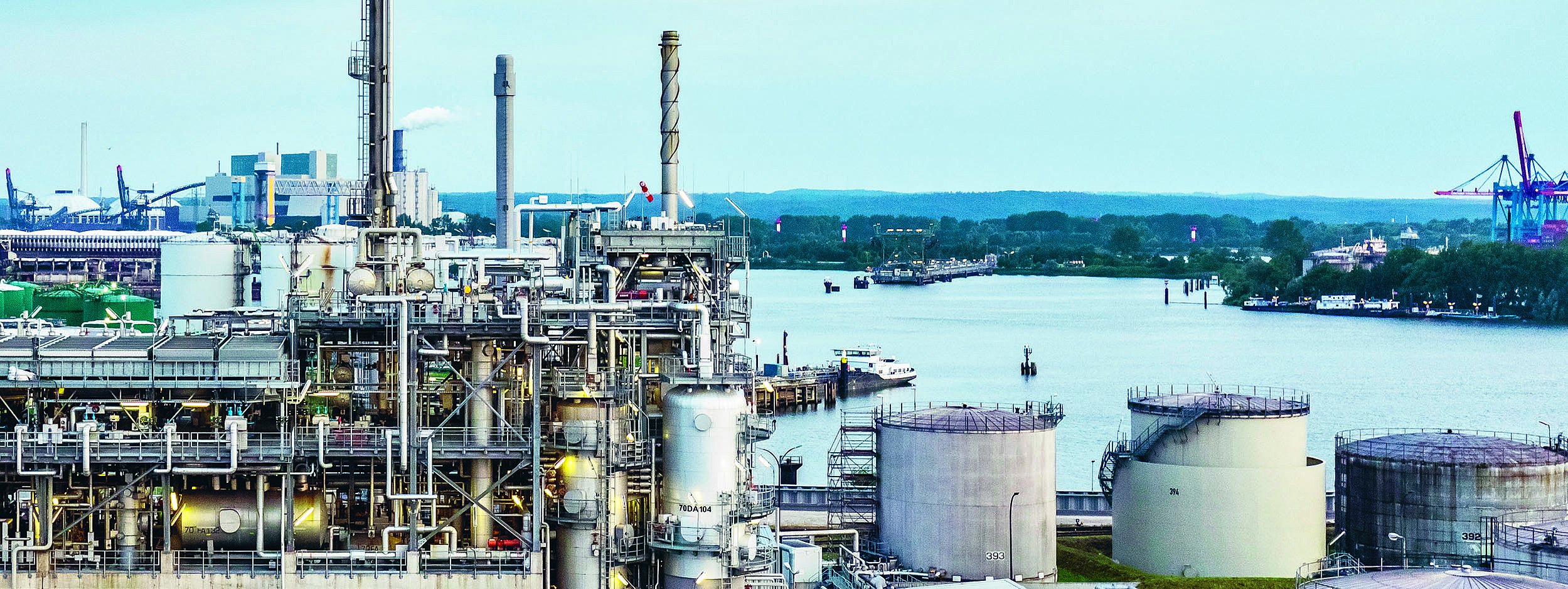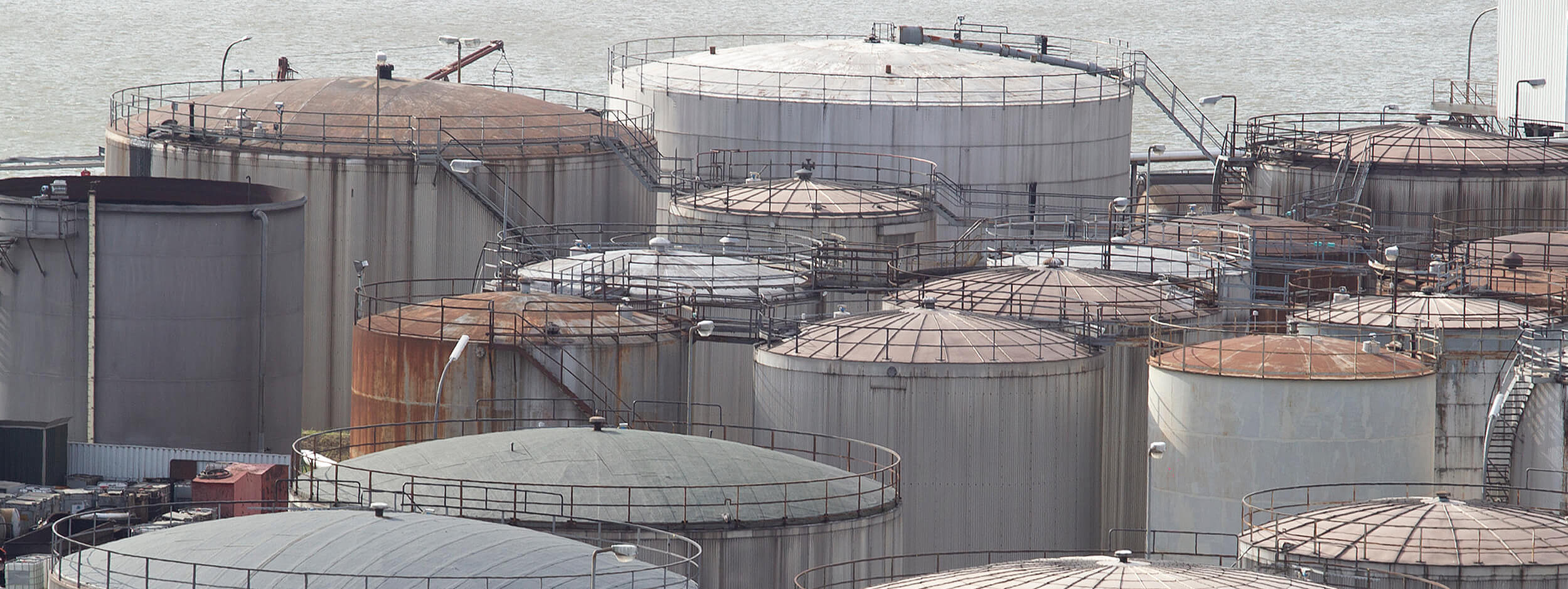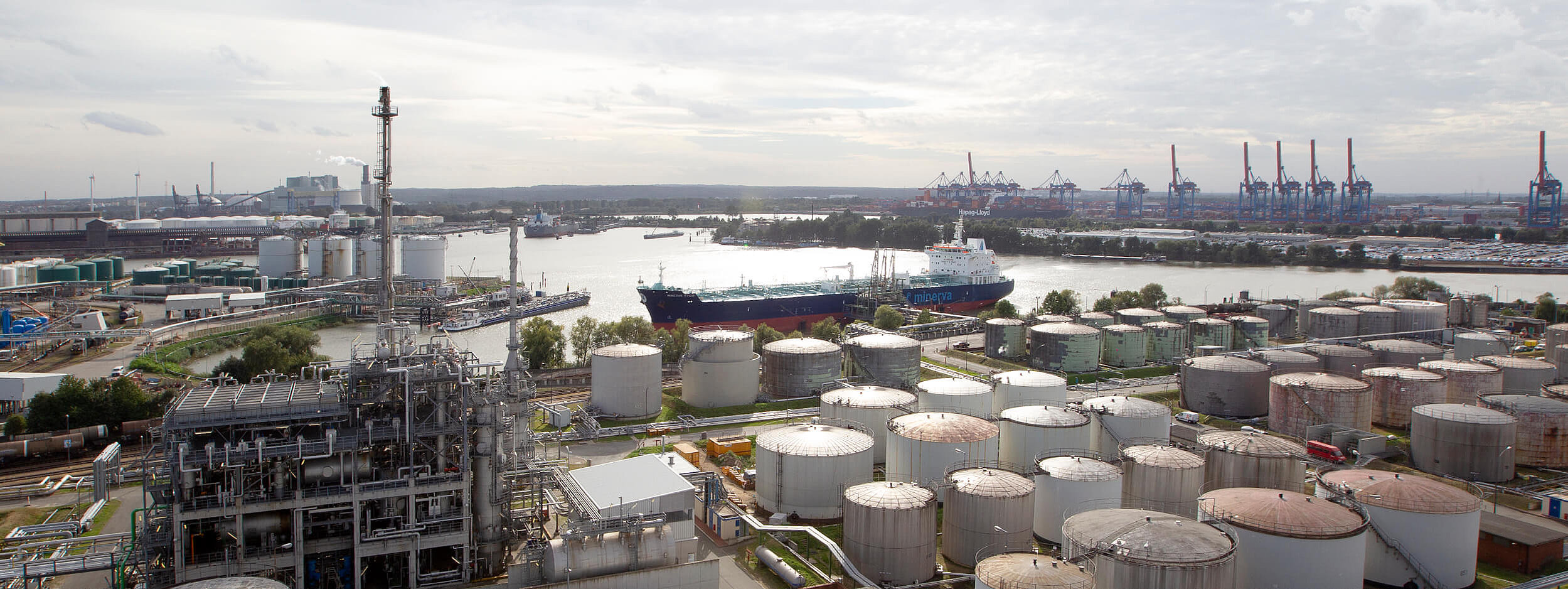
Climate Protection
and Resource Conservation
Resources are far too valuable to burn. As a result we also view the raw materials we produce, such as hydrogen, as more than just a source of fuel and therefore use it as a material process component with added value.
Management
Approach
Our society faces major geopolitical challenges in order to stop climate change. The aim of international climate policy is to limit global warming to less than two degrees Celsius by 2100 as compared to the level before industrialization. The challenges that arise from this, affecting many areas of our daily economic activities, are enormous, with the stipulations essentially requiring the transformation of entire industry sectors. This affects us in the area of mobility as well as in the chemical base materials industry.
Our aim to make responsible use of natural resources and to protect the climate and our environment is an established component of our corporate policy. We are always striving to reduce energy consumption and the amount of environmen-tal pollutants caused by the production process. We also work to help our customers to protect the environment. As part of this, climate-friendly process technologies and raw materials will continue to become increasingly important, paving a new path for the largely fossil-based industry production.
The H&R Group is working toward the goal of specialty production based on renewable raw materials and energy. We want to sustainably reduce fossil-based raw materials and replace these with bio-based, synthesized and recycled raw materials. Rather than achieving full decarbonization in the sense of completely eliminating the use of any carbon sourc-es in the production of our products, we want to support the use of alternative, non-fossil hydrocarbon sources and thus operate our refineries in a climate-friendly manner as the core of our Group-wide business.
We strive to achieve a 70% proportion of products from sus-tainable raw materials Group-wide by 2030. By 2035, we want to achieve carbon-neutral production. The overall goal was defined for the first time in 2021 as part of the regular Annual Shareholders’ Meeting of the listed Group parent company H&R GmbH & Co. KGaA. Partial goals were first defined in 2022 by the Executive Board and operating units. Since the start of the year, a transformation manager oversees these goals and will adjust them as needed.
Group-wide, our production and processing sites are certified in line with ISO standards 9001 (quality) and 14001 (envi-ronment). Our specialty refineries and GAUDLITZ GmbH are also certified in line with ISO standards 45001 (occupational health and safety) and 50001 (energy), which we use to mon-itor and control our energy, resource and CO2 management. Since 2012, we have been reporting figures for our carbon emissions, wastewater and waste as the amount of emissions per ton of feedstock. This allows us to better record the emis-sion load than by means of the absolute amount of emissions, especially as this can change regularly with changes in the set-up – for example, due to new systems. As the degree of verti-cal integration increases and production efficiency improves, we aim to avoid exceeding our own 2011 reference value and where possible to come in below that benchmark.
Our “Environmental Aspects and Impacts” database enables us to identify which of our activities have an impact on the environment. This allows us to identify opportunities for improvement and develop appropriate measures.

Energy Consumption and
Carbon Emissions
Our goal is to optimize our production processes so as to maximize the proportion of specialty products and to min-imize the proportion of barely usable components, or com-ponents that can only be used in a combustion process. Our feedstock is a key element in this regard, because the better its quality and the more specifically it is tailored to suit the individual production units, the greater the yield of high-quality specialty products.
The chemicals industry faces the challenge that it cannot be fully decarbonized – even in a greenhouse-gas-neutral world, carbon sources will still be needed for its products. As such, we want to increase the share of hydrocarbon-based raw ma-terials (from organic, synthetic and recycled sources) that we use and reduce the share of crude oil-based source materials. Our aim is therefore to do without feedstock based on fossil sources such as petroleum. Since non-fossil carbon sources such as biomass or removing CO2 from the air are only possi-ble to a limited extent and/or very costly, the recycling of car-bon sources (such as chemical recycling/pyrolysis processes) and the consistent building of a circular (carbon) economy play a central role in achieving carbon neutrality.
But energy consumption also plays an important role here – the greater the degree of processing, the more energy has to be used to produce the products. In general, the basic chem-icals sector is a branch of the industry with very high final energy consumption, which is currently primarily fulfilled through the direct use of fossil energy sources. To avoid en-ergy-related emissions from burning fossil fuels, high additional demand for renewable energy in the country’s energy mix is necessary.
We pursue a Group-wide approach for the efficient use of energy. Our refinery sites are aligned with the ISO standard 50001 and must therefore meet annual environmental tar-gets or improve their environmental performance. The goals that have been set could be carbon reductions, for example, which can be calculated from energy savings. Worldwide, the processing and sales sites that are not certified and whose energy policies are thus not inherently laid out by the ISO standards have defined Continual Improvement Process (CIP) projects. The goals are not stipulated by the Group at these sites. They can, however, include increased energy efficiency through the use of energy-conserving machinery and tools, through preventative maintenance or an optimization of the process steps.
For the two energy-intensive specialty refineries in Germany, whose energy costs are also significantly higher than the international average, our company has also declared the goal of always keeping their energy consumption as low as possi-ble and ensuring that it is as efficient as possible to reduce the carbon emissions as much as possible.

Waste
Because of the wide variety of types of waste, the quantity, the complexity of disposal procedures and disposal costs, op-erational waste management has a high priority for the H&R Group. At the same time, this waste is very materially linked to the processing of raw materials for the coupling process as well as in relation to the processing plants at both refineries. At the international processing and sales sites, there is either no processing waste or only insignificant amounts that are not summarized in a Group waste record. Accordingly, the wastewater volume listed in the following refers solely to our two refinery sites in Germany.
The goal of our waste management is to ensure professional disposal of the waste, thereby adhering to the legal frame-works. At the same time, we want to avoid detriments to the general population that could arise from the waste or the dis-posal.
As much as possible, we strive to reduce or reuse waste rath-er than dispose of it.
For the refinery sites, the legal parameters are laid out in Section 60, paragraph 2 of the Act to promote recycling and ensure ecologically friendly waste management (Closed C ycle Waste Management Act – KrWG). Additional requirements arise from the recurring certification in accordance with ISO standard 14001.
The most important measure for adhering to the requirements is the position of the waste officer. This officer oversees the scope and execution of processes stipulated by waste law at the Hamburg and Salzbergen sites. This also includes in par-ticular matters of professional and legal disposal. The classi-fication of the waste, the selection of the specialized dispos-al contractors and the compliance with the requirements is also monitored at both sites by an external and independent company. It also supports the work of the waste officer with internal audits and audits by the disposal contractors and therefore additionally ensures that laws, provisions, audit obligations and regulations are adhered to. Overall, this ensures the performance of our waste management.

Water and
Wastewater
The prudent and conscious use of water resources is an issue that the H&R Group classifies as material. At the same time, the amount of water that is required is very materially linked to the processing of raw materials for the coupling process as well as in relation to the processing plants at both refineries. At the international processing and sales sites, there is ei-ther no wastewater or only insignificant amounts that are not summarized in a Group waste record. Accordingly, the waste-water volume listed in the following refers solely to our two refinery sites in Germany. Our water sources at these sites are the local utility companies. The Salzbergen site also draws water from the Ems River and uses it, in processed form, as process and boiler feed water to provide steam. Water from the river is also used to compensate for evaporation losses in the cooling water circuit. In order to conserve water, we use our cooling water several times in the process in some cases.
Most of the water required for our refineries is used for cool-ing. This water does not come into contact with our prod-ucts and can be returned directly to the environment. Both refinery sites have permits for the legal removal and return of water. Only a small proportion of the water is used directly in our refinery processes.
